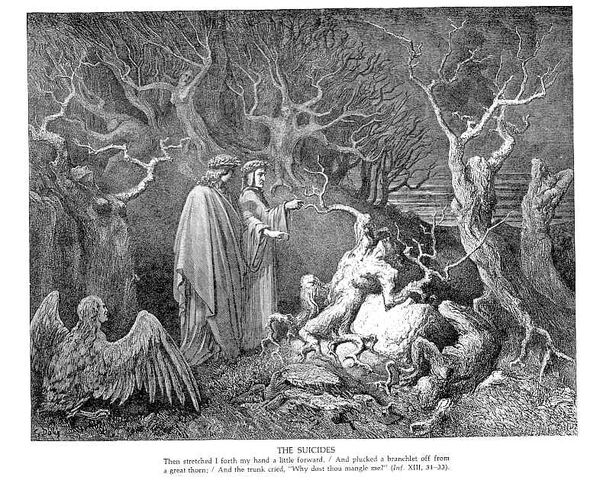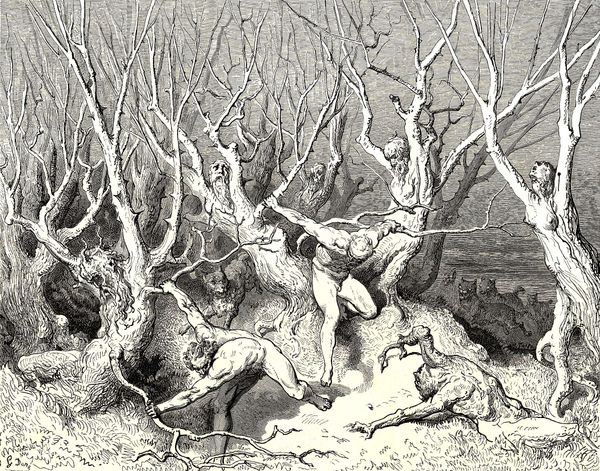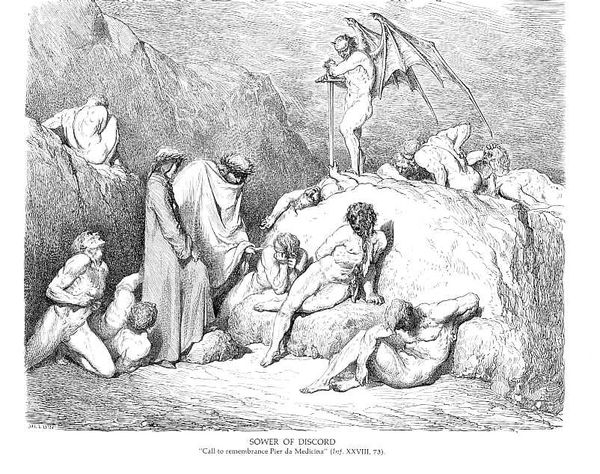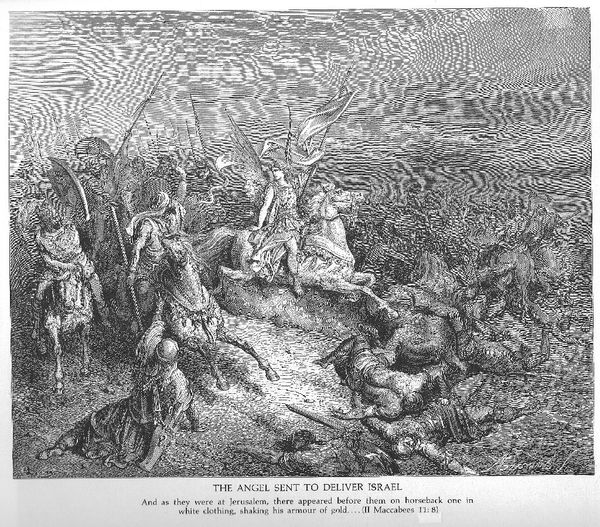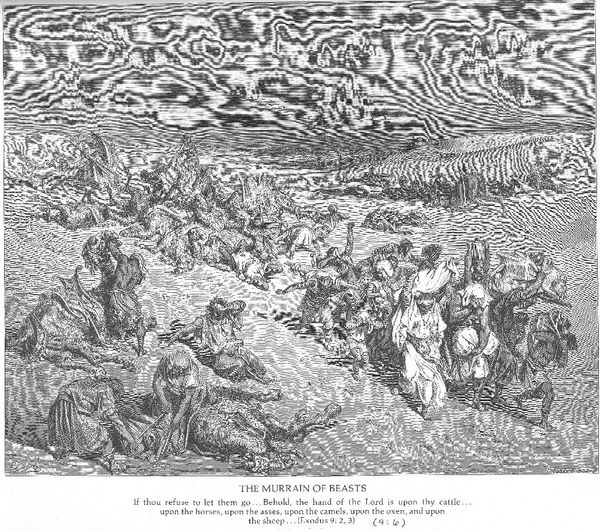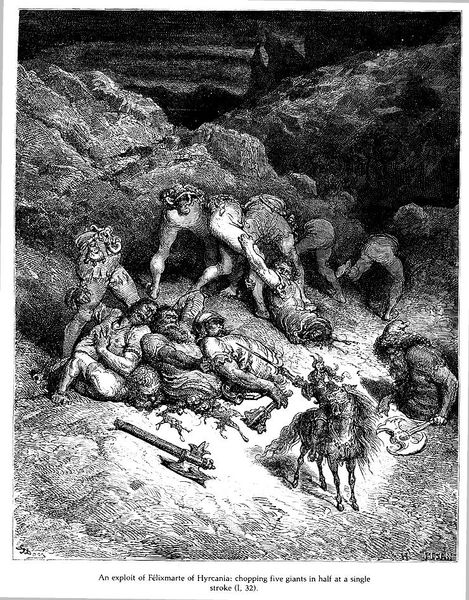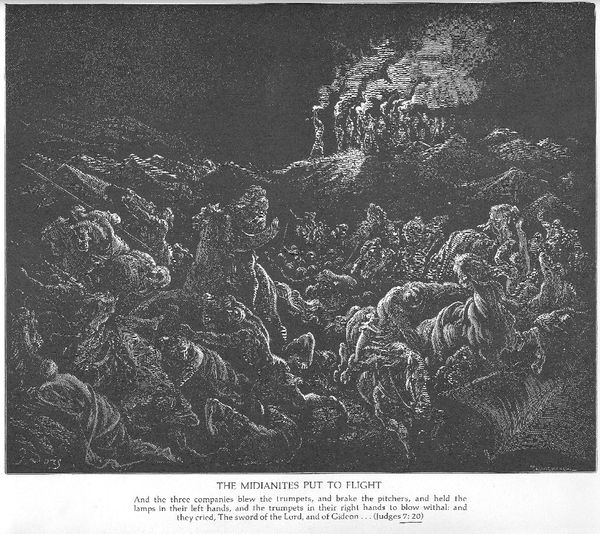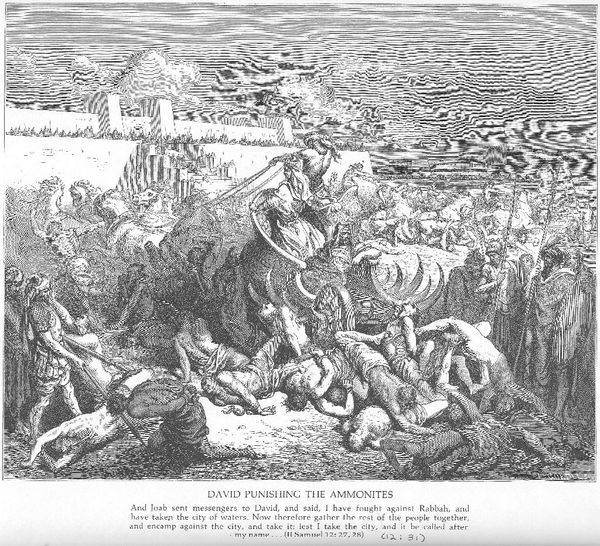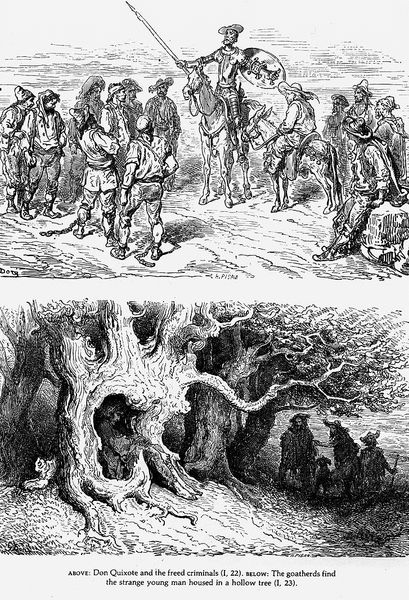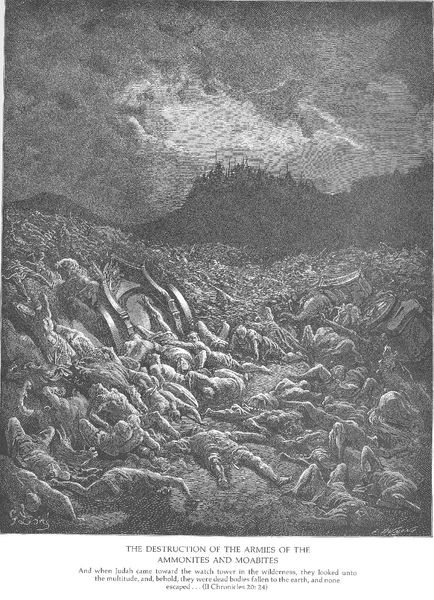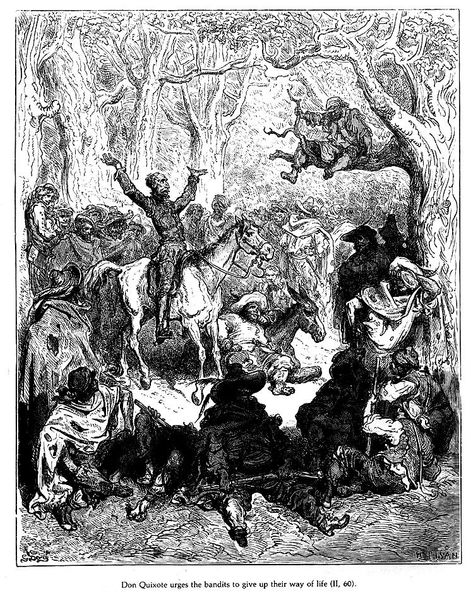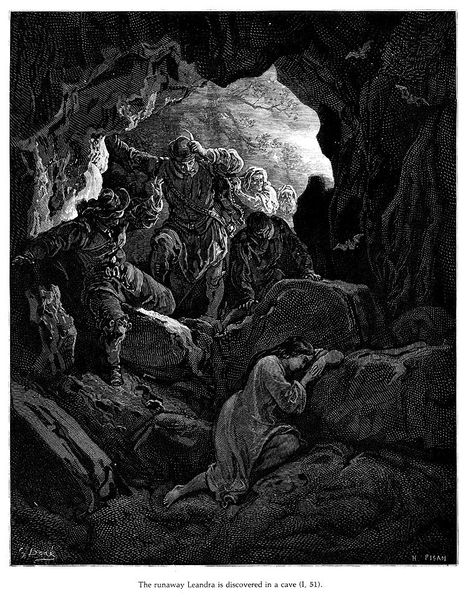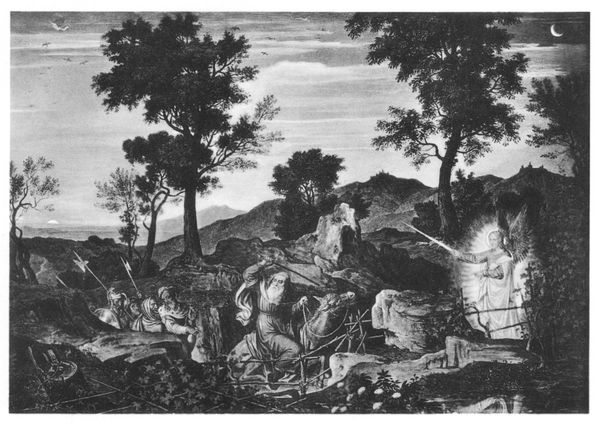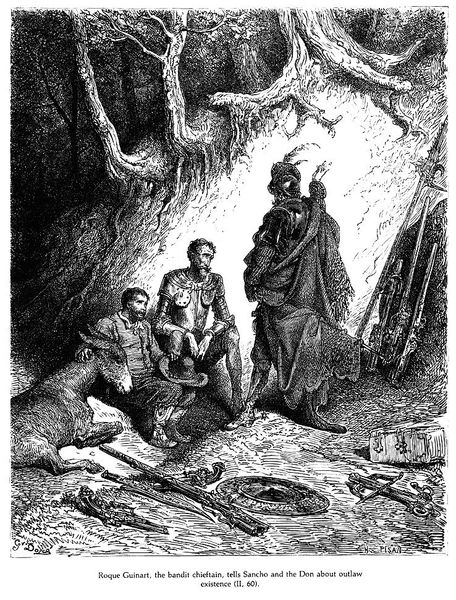
drawing, print, ink, engraving
#
drawing
#
narrative-art
# print
#
landscape
#
figuration
#
ink
#
romanticism
#
history-painting
#
engraving
Copyright: Public domain
This is “The Suicides II,” a stark engraving by Gustave Doré. While undated, it most likely belongs to his illustrated edition of Dante’s Inferno from the 1860s. The image presents a nightmarish vision of the seventh circle of Hell, specifically, the Wood of the Suicides. Doré was a commercially successful artist in France, and his illustrations were widely circulated in books and periodicals. His prints helped shape the popular understanding of classic literature. He also responded to the social issues of his day. He was commissioned to create images of the impoverished districts of London, for example. In this illustration of Dante, Doré’s dense cross-hatching creates a disturbing scene of human forms merging with gnarled, thorny trees. It evokes a sense of inescapable suffering. This reflects the moral lesson of Dante’s Inferno, but it may also speak to the broader social anxieties of 19th-century Europe. To fully understand the image, we must turn to both literary history and art history. We might consider the changing attitudes towards suicide in European culture, and examine the conventions of Romantic-era depictions of nature.
Comments
No comments
Be the first to comment and join the conversation on the ultimate creative platform.
